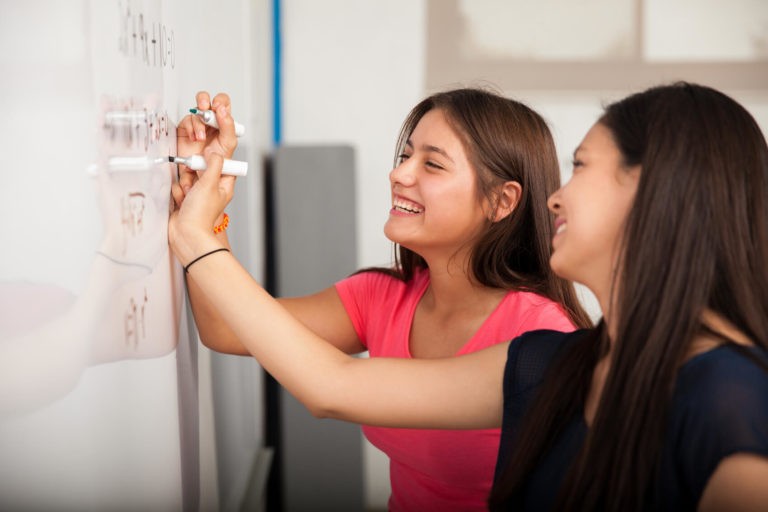Today, students have become accustomed to high paced and interactive means of entertainment. They are exposed to it on a daily basis. It is because of this that teachers must equally match the level of excitement found in those types of entertainment in the classroom in order to fully capture student attention. Essentially, teachers have to compete with things like television, video games, social media, online games, and much, much more! Teachers truly have a challenge ahead of them, but with proper planning and execution, teachers can successfully match the fast paced and energetic world that our students are so familiar with and love by implementing strategies that open-up lessons with a bang! Below are a few ideas that will help you grab (and keep) student attention from the very beginning of a lesson.
Pass the Ball
Most students love sports! Even if they aren’t an athlete or play on a team, they generally enjoy playing a sport when given the opportunity. You also have some students who only love sports, and they have a hard time staying focused and getting connected inside the classroom. This activity is sure to please both types of students! Using a ball (preferably one that is small to medium in size and soft enough that it won’t harm a student in the event it goes astray or awol), the teacher will ask a question to review material learned in the previous class period by tossing it to a student. The student catches the ball and attempts to answer the question. If the student answers correctly, he or she may toss the ball to a different student of his or her choice for the next question. If the student answers incorrectly, he or she will toss the ball to another student in order to “phone a friend” for help in responding to the question correctly. The teacher can determine how much time to allow for student responses (i.e. fifteen seconds, thirty seconds, and so on). The goal is to answer questions quickly and keep the ball moving!
Music and Dance Video
Students get really excited when teachers use music and/or dance in the classroom. For this strategy, teachers should find an upbeat, peppy music video to show at the beginning of class. A video with an interactive component like dance is also excellent to use! The video should go over or review the concept being learned at that time. There are a plethora of videos on YouTube, GoNoodle, and many other sites that make this strategy an easy one to try out! The same video should be shown each day that the concept is being taught so that students can start to learn it through repetition and have something to look forward to.
Four Corners
Four corners is a game that students love to play for just about any reason (especially younger students), but student- of all ages can benefit from its use. To implement four corners, the teacher should either label each corner with a certain response or direct students as to what each corner represents. Then, students are asked to respond to the teacher’s question by walking over and standing in the appropriate corner. Teachers can use four corners at the beginning of a lesson to informally assess prior knowledge of a new concept, assess knowledge retained from previous lessons, etc. For example, the teacher may display a multiple-choice question on the board. Each corner of the room is either labeled A, B, C, or D. Students are asked to respond by walking to the corner that corresponds with the answer on the board (A, B, C, or D). From there, teachers can ask students to explain and/or support their responses in order to gain a greater understanding of student learning. To make four corners even more fun, the teacher could play music while students determine their answers. Once the music stops, they must be in a corner!
Beat the Bell Bellringer
A lot of teachers implement the use of bellringers at the beginning of class, because they help students get focused and ready to learn; however, the redundancy of completing one each day can sometimes put a damper on student learning and their attention spans. Why not make it a little more interactive? In order to do this, students must first complete their bellringer individually. Then, they must find at least two other students to share their bellringer with. They will summarize each student’s response and add it to their own bellringer response. This will help students gain a better understanding of the concept at hand and experience it through another’s perspective. As mentioned previously, students should do this sharing process with at least two other students, but they should be encouraged to complete the process with as many students as possible before time runs out. Teachers may even keep track of the students who are able to do this the most to offer some type of classroom reward and encourage participation. Although bellringers are typically used in the upper grades, this particular strategy can be adapted for younger students as well by simply using a timer or countdown clock on the board.




